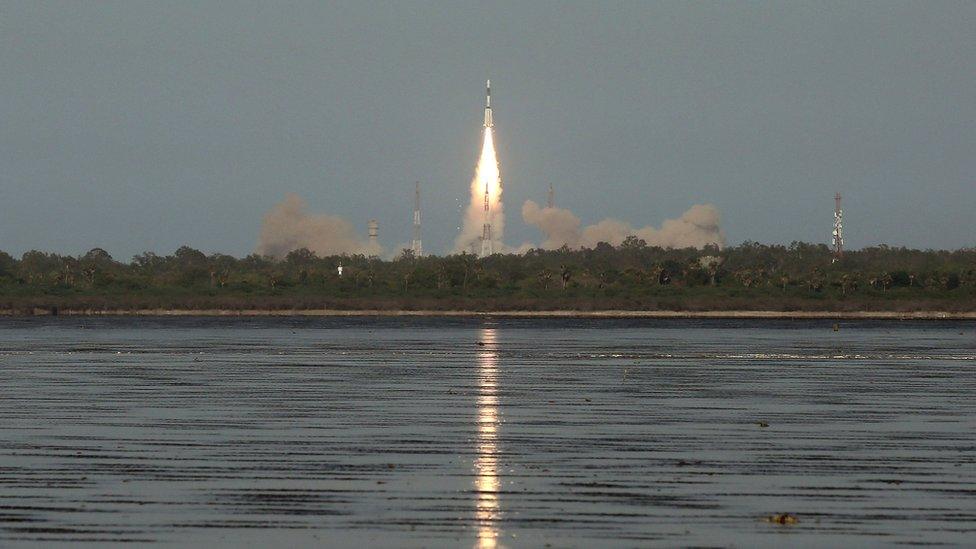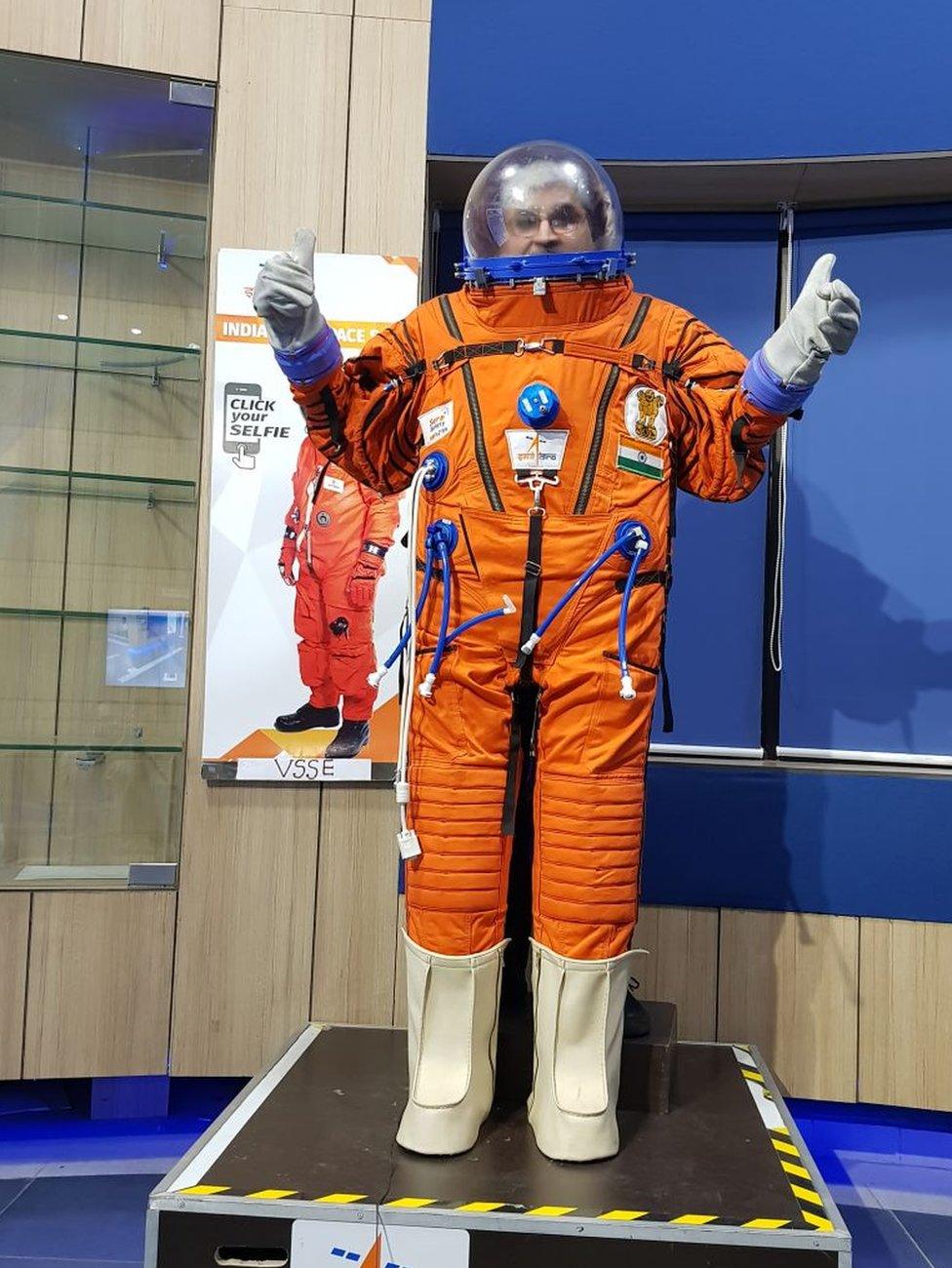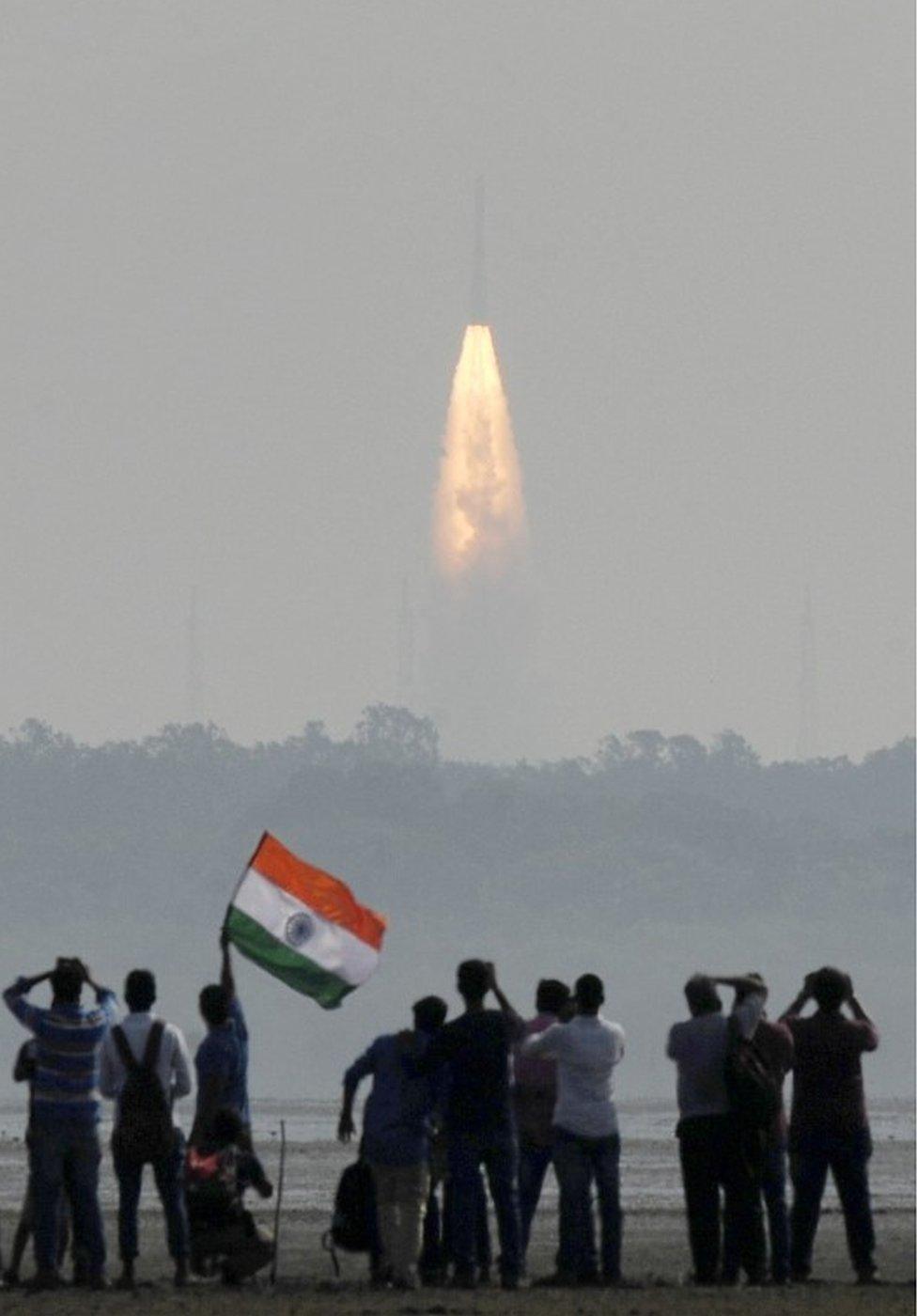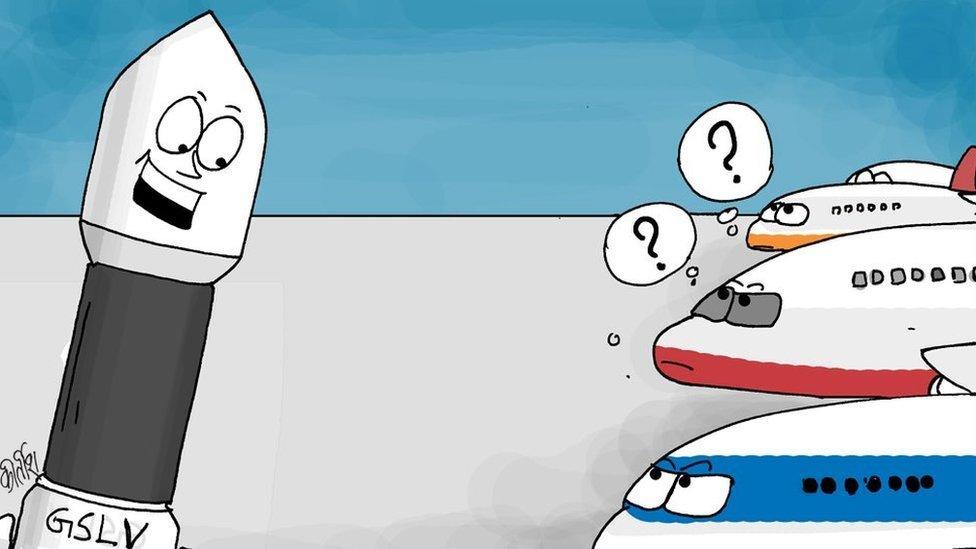Is India ready to send someone to space?
- Published

India's "monster rocket" carried a huge satellite into space in 2017
Prime Minister Narendra Modi has announced that India will carry out a manned space flight by 2022. Science writer Pallava Bagla asks whether the country's space agency can pick up the gauntlet.
Scientists at the Indian Space Research Organisation (Isro) reckon they will need $1.28bn (£1.01bn) to fulfil Mr Modi's challenge - and they think they can launch the flight within 40 months.
There are many reasons why they believe it can be done.
They hope to use the country's heaviest rocket - the Geosynchronous Satellite Launch Vehicle Mark III or GSLV Mk-III - for the space flight.
This 640-tonne, 43-metre tall rocket was launched successfully in 2017. The coverage of the launch was euphoric, and often colourful, with websites comparing the rocket to the weight of 200 elephants or five jumbo jets.
This rocket can launch 10 tonnes of payload into low-Earth orbit- an altitude of 2,000km (1,200 miles) or less above the planet - which is more than enough to send a crew into space, say scientists.
With some modifications, the launch pad from a site off the Bay of Bengal can easily be used to launch astronauts, they say.

The author in a locally developed a space suit for the astronauts
The space agency carried out a successful "pad abort test" in July which saw a test vehicle - carrying no humans, only a dummy - hurled skywards by a set of powerful in-built thrusters.
The demonstration simulated what would happen to the crew ship in the event of a rocket failure on the launch pad.
Indian scientists have also developed light weight silicon tiles that can resist getting burnt and will be used to coat the outside of the space vehicle. (When a spacecraft comes back into the Earth's atmosphere it faces roasting temperatures above 1,000C due to friction.)
An Ahmedabad-based laboratory has already developed a space suit for the astronauts. The biggest challenge, according to scientists, will be to train the astronauts and to develop the necessary life support system to keep them alive in space.
"The astronaut programme will not only bolster national pride, it will also galvanise the youth to take up a career in science," Isro chairman and well-known rocket scientist, K Sivan, told me.
'Coming of age'
Dr Sivan says that since India still does not have the full capability of training astronauts, "expertise of other agencies" could be sought to keep to the deadline.
Rakesh Sharma, the first Indian to travel into space in 1984 in a Soviet rocket, says a manned space flight is a "natural corollary of every space programme that has attained a level of maturity - a coming of age, if you will."
To date Russia, the US and China have sent astronauts into space. If India can achieve this, it will become the fourth country to launch humans into space.
But there are some scientists who believe the goal of the space mission is misplaced.
"Sending Indians into space is the most silly and idiotic idea, especially 50 years after Neil Armstrong first landed on the moon," veteran space scientist V Siddhartha says.
Armstrong, who died in 2012, set foot on the Moon on 20 July 1969, famously describing the event as "one small step for a man, one giant leap for mankind".
Mr Siddhartha says robotic missions can now do many things that astronauts do, without the risk of sending humans into space.
Dr Sivan counters this by saying that there are still many tasks only human intelligence can perform. He adds that India seeks to build up its own capabilities to launch Indians into space.
"If colonies have to be set up outside Earth for the human civilisation, how can India, one of the oldest civilisations, be left behind and wanting," he said.

The rocket carrying 104 satellites was launched from the Sriharikota space centre in 2017
Professor K Vijay Raghavan, principal scientific adviser to the federal government, told me India has the "perfect technology and cultural environment" for the mission.
In the past, Isro has always delivered on the challenges that have been thrown at them.
In 2014, India successfully put a satellite into orbit around Mars, becoming the fourth nation or geo-bloc to do so. The mission cost $67m, which, by Western standards, was staggeringly cheap.
Earlier, in 2009, the inaugural moon mission Chandrayaan-1 became the first and the most detailed search for water on the Moon using radars.
And in 2017, India created history by successfully launching 104 satellites on a single mission, overtaking the previous record of 37 satellites launched by Russia in 2014.
"Failure is not an option," says Dr Sivan.
"Team Isro will rise to the challenge to make sure that an Indian is launched into space by 2022."
Pallava Bagla is a Delhi-based science writer and author of Reaching for the Stars: India's Journey for Mars and Beyond' published by Bloomsbury.
- Published6 June 2017

- Published5 June 2017

- Published15 February 2017
